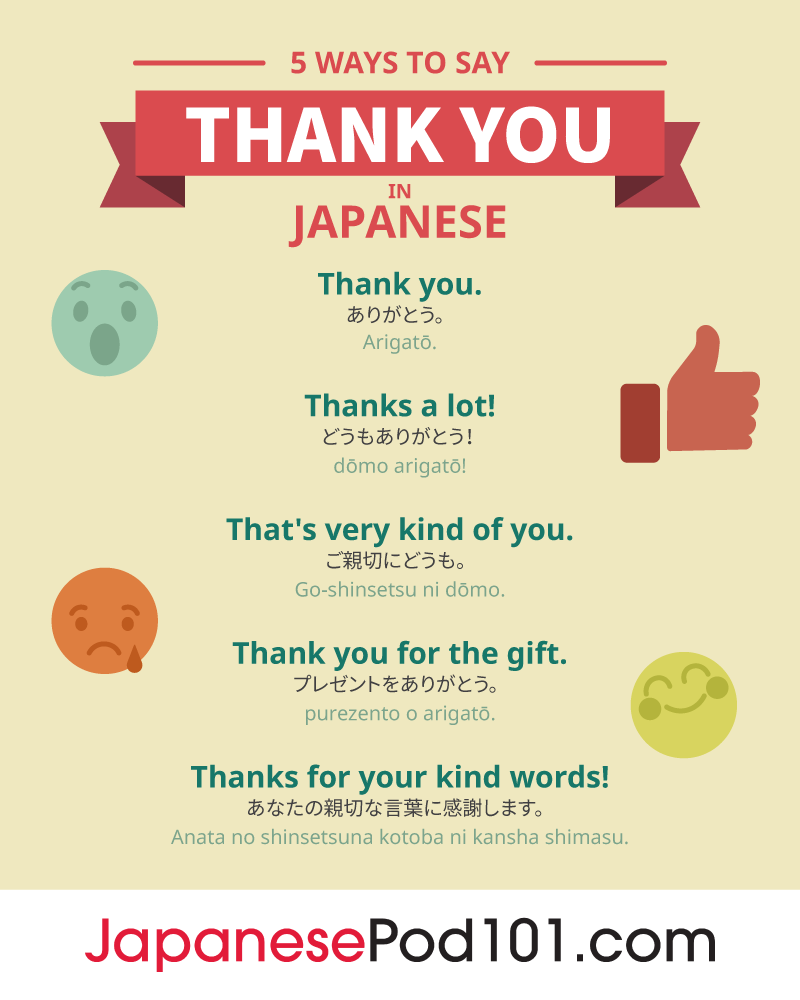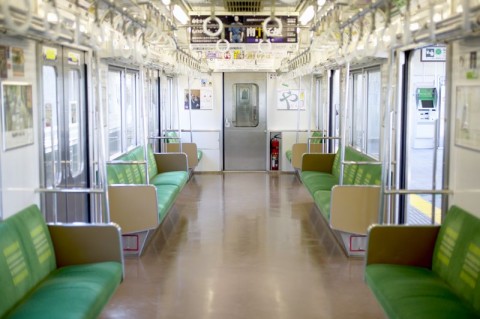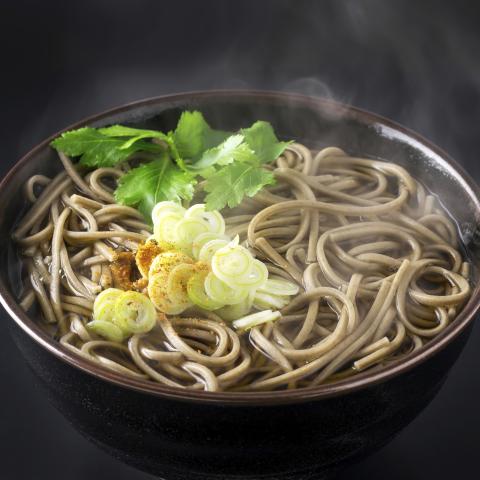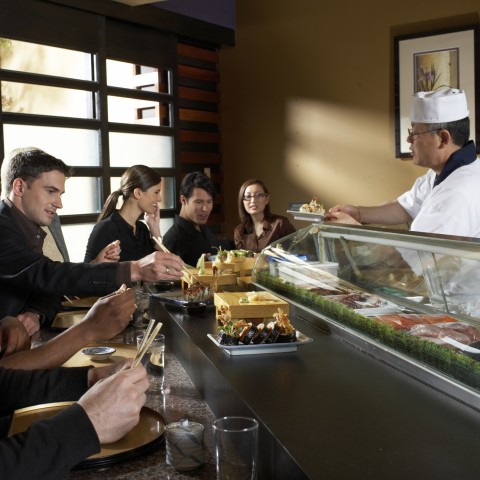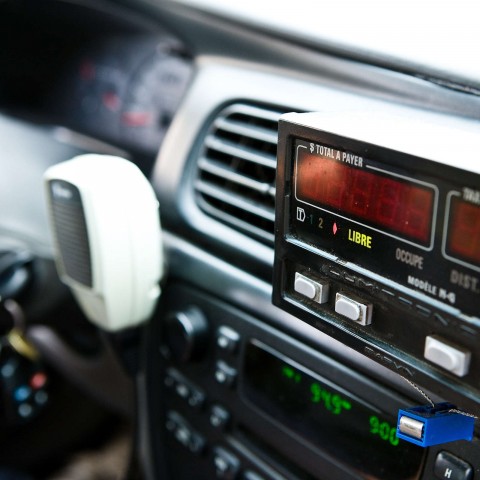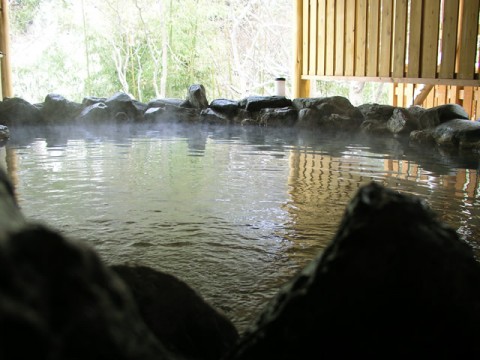What is Japanese etiquette?
Japanese culture is well-known for its politeness and unique features, and what is thought to be normal in other countries isn’t always common in Japan. Many foreign tourists wonder what exactly the DO’s and DON’Ts in Japan are when traveling to Japan for the first time.
Japanese people are warm and welcoming to travelers, and they understand if foreign travelers don’t know all the Japanese customs. However, it’s always good to know the basic Japanese etiquette and manners in advance to make your trip more smooth and enjoyable. It’s also a part of experiencing and exploring the Japanese culture.
Here’s our guide to Japanese manners and etiquette, especially for travelers. Here, you’ll find all the Japanese etiquette tips, Japanese customs, and other Japanese etiquette for foreigners you need to know!
Table of Contents
- Basic Japanese Etiquette
- Japanese Table Etiquette & Manners
- Japanese Etiquette for Sightseeing
- Japanese Etiquette for Greeting
- Japanese House Guest Etiquette
- Japanese Business Etiquette
- Conclusion: How JapanesePod101 Can Help You Learn More Japanese
1. Basic Japanese Etiquette
The DO’s and DON’Ts in this first section are very basic, and they’re common in most important occasions in Japan.
1- DO’s
- Be Polite
Politeness may be the basis for other Japanese etiquette rules. It’s noted that Japanese etiquette is greatly influenced by the concept of collectivism, which is characterized by fairness among people and prioritization of interests of the social group over individuals. It also emphasizes on maximizing the benefits and goodness of the group through each individual’s effort and thoughtfulness. This means that being polite and kind to others is for everyone’s convenience and happiness.
- Respect
Respect is another very essential value when it comes to Japanese manners and customs. In order to add to everyone’s happiness, you should respect others’ rights, interests, convenience, and so on. In addition, influenced by Confucianism, respecting elders is also important; please help elders cross the street, walk up stairs with luggage, and so on.
- Be Punctual, Even Early
Keeping time is imperative in Japanese culture social etiquette. This is a way of respecting others and not wasting their valuable time. Japanese trains arrive on time, and Japanese people usually arrive five to ten minutes before the meeting time. If it’s an interview at a company, it’s not good enough to arrive just on time; you’re expected to arrive earlier than the appointment time. Definitely keep this in mind if you’re serious about learning Japanese business etiquette.
- Keep in Order
To be fair to everyone and respect others, Japanese people naturally queue up even if there’s no instruction to do so. For instance, they may keep from rushing into an activity if they see that there are already too many people doing it. You’ll see Japanese people queuing neatly aside the opening doors of the train on crowded weekday mornings.
Keep public places clean and do not litter.
2- DON’Ts
- Don’t Bother Others
Prioritization of the group’s interests also means that bothering and annoying others is considered very bad manners in Japan. Even if you’re starving or don’t have enough time, please refrain from eating smelly foods (such as fast food) on the train, or putting on makeup during the ride.
- Don’t Litter
Streets are not your own room, so don’t litter on the streets. Usually, you don’t find many trash bins along the streets in Japan, but you’ll notice that the ground is free from rubbish. It’s common courtesy according to modern Japanese etiquette to keep your trash with you until you find a bin or arrive home.
- Don’t be Loud
Another important Japanese etiquette rule: In public places, you’re expected not to make loud noises. Especially on a train, keep your conversation voice soft and quiet. Talking loudly or talking on the phone will make surrounding Japanese people feel uncomfortable. Please don’t forget to set your mobile phone to silent when you’re on a public transportation.
2. Japanese Table Etiquette & Manners
There are quite different table manners and etiquette in Japan compared to other countries. Don’t be surprised; when in Japan, do as the Japanese do!
1- Greet Before/After Eating
This is one of the most basic Japanese greeting etiquette rules, and Japanese people do this for every meal.
According to Japanese etiquette table manners, you should say いただきます (Itadakimasu) before eating. The phrase Itadakimasu doesn’t have a direct translation in English, but it means “I’m thankful for this food and I will start eating.”
Also, say ごちそうさまでした (Gochisō-sama deshita) after you’ve finished eating. This phrase means “It was delicious,” and it shows appreciation for the meal.
2- Use Chopsticks Properly: Chopstick Etiquette in Japan
When you’re an adult, you’re expected to know how to use chopsticks properly as this is good Japanese etiquette when eating. So when you’re eating at a Japanese cuisine restaurant, try to use chopsticks. If you don’t have the confidence to use chopsticks well, you can still ask a waiter for forks and knives.
However, don’t play with your chopsticks. It’s considered rude behavior, as well as childish, if you hold one stick with one hand and the other stick with the other hand, poking food around or pointing to something with your chopsticks, etc.
In addition, never stick them vertically in your rice bowl and never use your chopsticks to pass a piece of food to someone else’s chopsticks directly. These actions are associated with funeral rituals and the deceased, and are considered the worst possible chopstick behavior.
3- Make Noise While Eating Soup Noodles
According to Japanese manners and etiquette, making noise while you’re eating is considered bad manners. The only exception is for soup noodles such as ramen, udon, and soba, when it comes to slurping soup and noodles. Slurping shows that you’re enjoying your food. However, making chewing noises isn’t appropriate, and it’s considered rude and is associated with poor education. Close your mouth while you’re chewing food.
Slurping is ok only for soup noodles in Japan.
4- Do Not Pour Your Own Drink When You’re with Someone
This is another typical Japanese etiquette rule when dining. When you dine out with your friends, colleagues, or your boss, it’s rude to pour your own drink yourself. You pour drinks for everyone else first, and then they will pour your drink in return.
Usually, those who are youngest or in the lowest position of a hierarchy should be the one to pour elders drinks first. This is especially true for work-related occasions.
Even among friends, pouring drinks for each other is considered nice, and it shows your mutual thoughtfulness toward a good friendship.
5- Do Not Pay a Tip
Good news for everyone! According to Japanese etiquette, money shouldn’t be given as a tip. This bit of Japanese etiquette when visiting may surprise you, but don’t leave a tip on the table. Otherwise, the waiter/ess will run after you to let you know that you forgot your money. If you try to hand a tip to them, the staff member will wonder what the money’s for and won’t know what to do with it.
So, just keep your change in your pocket, even if you’re impressed by nice Japanese services. Instead, tell a staff member that you really liked their food or services with a smile.
Make sure you use chopsticks properly, especially at proper Sushi and Japanese restaurants.
3. Japanese Etiquette for Sightseeing
In this section, we’ll go over etiquette in Japan you need to keep in mind while sightseeing! This is just simple Japanese etiquette to ensure you’re polite and respectful wherever you are.
1- At Shrines and Temples
There are numerous 神社 (jinja) or “Shintō shrines” and お寺 (o-tera) or “Buddhist temples” across Japan. Foreign tourists are welcome to visit them, but there are particular manners and etiquette rules for sightseeing.
Shrines and temples are considered sacred places, and you should behave quietly with respect. Smoking is not allowed inside of the precincts. Take off your hat and don’t dress too casually when you enter buildings (for example, don’t wear beach sandals).
When arriving at the main building, throw a coin into an offering box in front of the sacred object. Then, make a short prayer with your palms together in front of your chest.
When entering Shrines, you need to do a purification ritual. There’s a water source usually located near the main 鳥居 (Torii) gate and you need to purify your body before proceeding further into the Shrine.
Take a provided ladle to scoop up water and pour it over both of your hands to rinse them. Then pour a bit of water in your hand and use it to rinse your mouth. Do not swallow the water, but spit it out on the ground. Put the ladle back to where it was.
2- Taxi Doors
More often than not, Japanese taxi doors are automatic! So note this tip on Japanese cultural etiquette for taxis.
When you stop a taxi, the driver will pull the lever and open the door (usually for the back seat) for you. After you get in a taxi, the door will close automatically. So don’t try to open or close the taxi door by yourself.
Japanese taxi calculates fee by meters.
3- Onsen and Swimming Pools
温泉 (Onsen), or hot springs, is one of the most popular things to do in Japan, especially during the cold seasons. If you have large tattoos on your body, however, you have to be checked to see if you’re allowed to use Onsen or the public swimming pool.
This essential Japanese etiquette rule may seem strange, so let us explain.
Traditionally, most Japanese onsen and public pools ban people with tattoos from using the facilities. This is because they intend to keep out Yakuza and members of crime gangs, who are associated with having body tattoos.
However, due to the growing demand of foreign tourists with tattoos, the number of tattoo-friendly facilities is increasing. Some facilities provide cover-up tape to allow those with tattoos access to the facilities. Be sure to check the availability in advance if you have visible tattoos on your body.
When you use Onsen, Japanese etiquette requires that users wash their bodies before entering a pool. Onsen is shared with others and it must be kept clean and hygienic. Even if you’re very excited to experience Onsen, don’t rush straight into a pool; clean yourself first.
Japanese Onsen is usually gender-separated and you can’t wear swimsuits.
4. Japanese Etiquette for Greeting
As you learn Japanese etiquette, knowing how to greet is essential. Greeting is imperative to the Japanese etiquette and manners, as politeness and respect start from the greeting.
1- Bowing
Bowing is one of the most important common Japanese body language gestures for both formal and informal occasions. People bow to greet, nod, thank, and apologize.
There are variations of how to bow, depending on the depth, duration, and seriousness, but foreign tourists aren’t expected to understand all of it. Japanese people won’t be offended if visitors don’t bow correctly.
Bow politely; bend your head and back in a straight line when you meet someone, thank someone, or say goodbye. Bowing can be a bit awkward for you at first if you’re used to shaking hands, but follow and imitate how Japanese people bow. When someone bows to you as a greeting, it’s usually sufficient to do the same in return.
Bowing properly and politely is one of the most important business manners.
2- Shaking Hands but No Hugging/Kissing
Japanese people also shake hands when they greet often, such as in a work-related setting. However, the Japanese don’t hug or kiss as a greeting. Japanese people prefer to keep personal space, and traditionally avoid intimate physical body contact in public.
Hugging as a greeting can be done by Japanese people only in special cases, such as meeting someone you know well after quite a long time, or when a person is extremely emotional with joy or in mourning. Ordinary Japanese people never kiss as a greeting. If you try to hug or kiss a Japanese person whom you just met, they will get startled and feel offended.
So, when you greet Japanese people, just bow or shake hands. Do not hug or kiss.
5. Japanese House Guest Etiquette
1- Remove Your Shoes
Japanese people never wear shoes inside of a house. Every house has 玄関 (genkan) or a sunken-foyer entrance inside of the door where you remove your shoes before you actually enter the main section of the home.
You also have to remove your shoes when entering Japanese traditional accommodations which are called 民宿 (minshuku) or 旅館 (ryokan), temple halls, some restaurants, and buildings with 畳 (tatami) areas. Tatami is a type of mat made of grass used as a flooring material in traditional Japanese-style rooms.
It’s very rude and offensive if you enter places with your shoes on where you’re supposed to take them off, so please be aware!
2- Bring a Gift
One of the essential Japanese etiquette rules when visiting someone’s house is to bring a little お土産 (o-miyage), or a gift, for the host in return for their hospitality. It’s common courtesy to give a nicely wrapped gift to the host to show your appreciation for their invitation. Common gifts include sweets or drinks that they can share and enjoy while you’re visiting.
It’s rude to visit without a gift, especially when you know that the host will cook meals for you. So, when you’re invited to your friend’s place, buy cakes or a bottle of wine, and arrive on time.
A bottle of wine or Champagne would be a good choice to take for a dinner invitation.
3- Slippers
If you’re invited to someone’s home as a guest, you may be offered a pair of slippers at the genkan for walking around inside. Slippers are okay on wooden or smooth flooring, but don’t wear slippers on tatami flooring. Remove your slippers before entering a Japanese tatami room.
In addition, some households have toilet slippers. You should change out of your original slippers into toilet slippers when you enter the restroom, and never step outside the restroom wearing toilet slippers. Some hotels and restaurants also have such separated slippers in the restroom.
To learn more, please watch our YouTube video about How to Visit Someone’s House.
6. Japanese Business Etiquette
Now, it’s time for our Japanese business etiquette guide. Be mindful of all the Japanese business etiquette dos and don’ts here, because they can make or break your first impression.
1- Greeting and Introduction
According to Japanese business etiquette rules, when you meet someone in a business-related occasion, it’s considered good manners to greet them with a decent bow. You should also introduce yourself briefly with your business card.
As for bowing, stand straight first, put your hands in line with the sides of your body, and bend your upper body forward. You shouldn’t bow too quickly, and don’t just bend your head nor arch your back.
Japanese people usually talk about themselves with their name, which company they work for, what job position they’re in, and sometimes how long they’ve worked for their company or industry. Telling or asking for detailed personal information is usually inappropriate.
To learn more about bowing, please see How to Bow in Japan & Manners.
2- Exchanging Business Cards
When you meet someone, exchanging 名刺 (meishi), or business cards, is a must-do business custom in Japan in formal settings. Treat a business card with care, as Japanese people regard it as one’s face.
Make sure you give or receive a business card with both hands when exchanging cards. Handing a card with just one hand is considered very rude. Further, read a card you were given carefully, and ask some questions or offer comments; this is a good way to start a conversation.
Japanese businessmen often bow when they exchange business cards.
3- Dining in Business Settings
Whether you’re dining with colleagues, your boss, or your clients, the seating position is important in business settings.
The seat in the deepest part of the room and the furthest place from the door is considered the best seat, and it should be offered to the most respected person (such as the person in the highest job position, or the oldest person). Further, clients are prioritized above your colleagues, even your boss. The seat closest to the door is considered the least important position, and this is usually used by the youngest person.
Also, the youngest person (or the person in the lowest job position) should usually take everyone’s drink order and tell it to the waiter or waitress. The most respected or important person often gives a small speech and gives a Kanpai toast.
Dining in a business setting in Japan is very hierarchical, and roles at the dining table are implicitly allocated and performed according to the participants’ attributes.
To learn more, our video about How to Attend a Japanese Company Drinking Party is useful.
7. Conclusion: How JapanesePod101 Can Help You Learn More Japanese
We hope this article about Japanese etiquette and manners is helpful, and that you’ll have a more enjoyable experience when you visit Japan!
If you’d like to learn about the Japanese language, you’ll find very useful content on JapanesePod101.com. We provide a variety of free lessons for you to improve your Japanese language skills.
We also have a YouTube channel where you can enjoy learning the Japanese language by watching videos and listening to actual Japanese pronunciation. Learning Japanese gestures is also very helpful when it comes to understanding Japanese etiquette and culture.
When you plan to visit Japan, don’t forget to check out the following content: Learn the Top 25 Must-Know Japanese Phrases!, Top 20 Travel Phrases You Should Know in Japanese, Best Traveling Tips and Places to Visit in Japan!, and much more.
Before you go, be sure to let us know in the comments what you thought about our Japanese etiquette guide. Do you feel more confident now, or is there still a situation or topic you need information about? We look forward to hearing from you!




